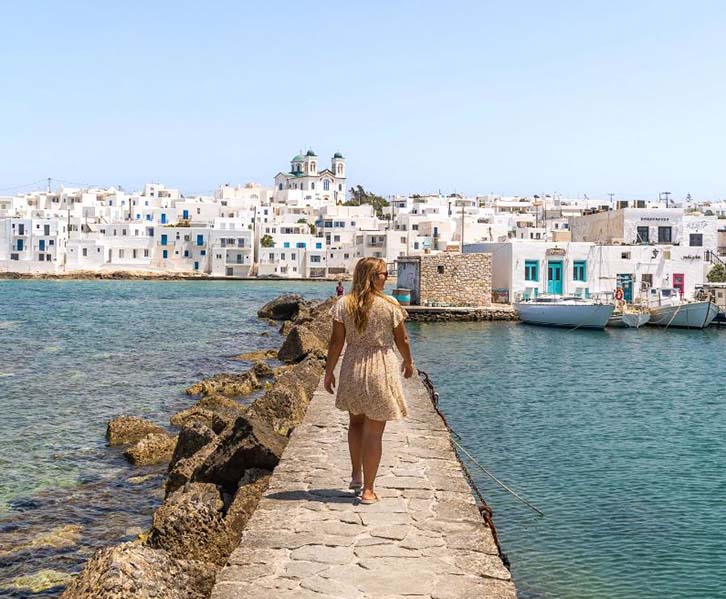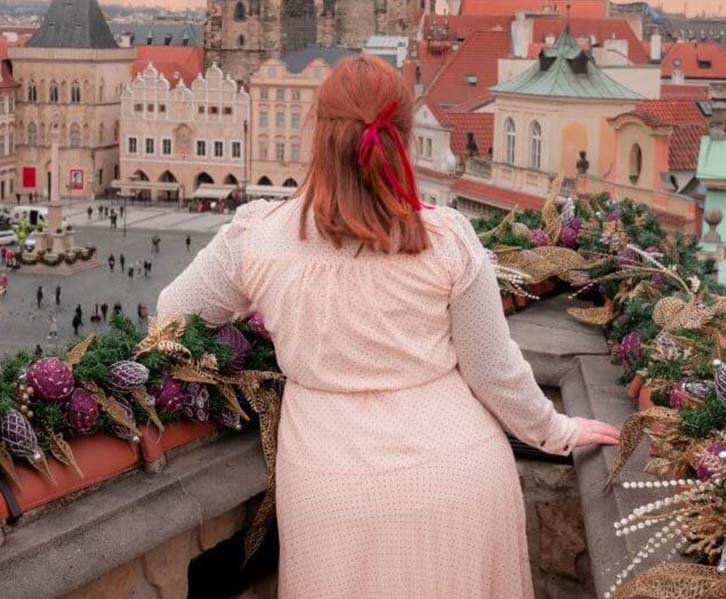As I disembarked from the plane onto the small Paros airport tarmac, a flood of sunlight enveloped me. Greek sunlight always possesses an ethereal quality, a sort of magical and almost excessively brilliant radiance. On this occasion, it felt particularly invigorating.
Perched in the vividly blue Aegean Sea, Paros serves as the gateway to numerous island-hopping adventures through Greece’s breathtaking Cyclades region. It epitomizes the quintessential image of a Greek island: charming villages with flagstone streets and whitewashed buildings adorned in vibrant blue, harmonizing with the mesmerizing sea. Rolling hills, surprisingly lush, and flat valleys adorned with vineyards and well-tended farms add to its allure. Paros boasts an array of beautiful beaches, from white sands to volcanic pebbles, and the intriguingly smooth rock formations of Kolymbithres Beach, all caressed by the invitingly crystalline waters of the Aegean.
An Island Immersed in History
Paros offers more than just pristine beaches, as I soon discovered while exploring some of the island’s prominent attractions. This little island is steeped in history; over the centuries, it has been under Venetian occupation, faced pirate raids, and was a thriving center of culture in Ancient Greece. Paros was the primary source of the semitranslucent, flawless Parian marble used for sculpting many ancient Greek statues. Visitors can still explore the Parian marble quarries in Paros, where evidence of ancient quarrying dating back to the 6th century can be found. One of the finest examples of this semi-transparent marble is on display at the Louvre – the Venus de Milo. However, Paros itself has plenty to offer. The renowned sculptor Nikos Perantinos bequeathed many of his masterpieces to the village of Marpissa on his native island, including several busts sculpted from Parian marble. These remarkable works can now be admired in a small yet well-curated museum housed in an old schoolroom.
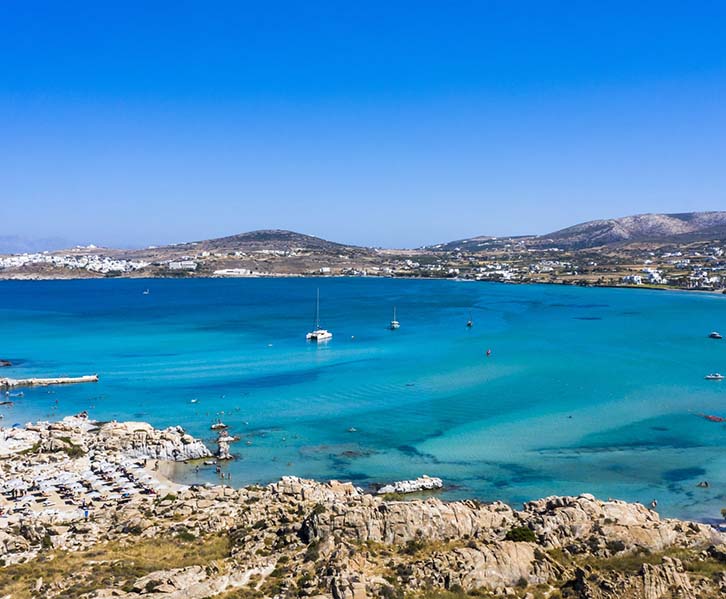
Much like my experience in Athens last year, Paros is a destination where the ancient and modern coexist harmoniously. In the capital city of Parikia, the weathered remnants of a Venetian fortress cut through the heart of the old town. It may appear somewhat incongruous amidst the white-washed buildings, yet it also feels perfectly integrated; the town has grown around it. Parikia itself is a labyrinth of winding flagstone streets – originally designed to baffle pirates during the days of raids. Distinguishing where the old town ends can be challenging; all contemporary structures adhere to the same architectural style as the older ones, adorned in the quintessential Greek island palette of white with blue accents.
Located in the heart of Parikia, the formidable Ekatontapiliani Church stands as one of the oldest Greek Orthodox churches in Europe. Its austere yet majestic presence contrasts with the tranquil, unhurried atmosphere of the town, but the complex represents an impressive specimen of Byzantine architecture. The small museum within is a treasure trove of captivating antique wooden carvings. Further collections of Orthodox artworks await at the Byzantine Museum in Naoussa. This petite museum is housed within the Agios Athanassios monastery and showcases around a hundred Byzantine and post-Byzantine artifacts, many of which were crafted by local artisans.
An example of a more intimate Greek Orthodox chapel is the Monastery of Agios Arsenios, situated in the hills above the town. This serene location serves as the final resting place of Saint Arsenios, the patron saint of Paros. The small complex exudes an air of tranquility. The diminutive Greek Orthodox chapel boasts a dark interior adorned with intricate wooden carvings and gleaming gold accents. However, it was the exterior that truly left an impression on me. A meticulously kept flagstone courtyard basked in peaceful silence, nestled amidst the immaculate white buildings of the monastery and refreshed by mountain breezes. From this vantage point, the vistas of the island were nothing short of breathtaking; the lush greens of the interior, the dazzling white of the villages huddled along the coast, and, of course, that mesmerizing Aegean blue.
Paros off the Beaten Path
Despite its stunning coastline and popularity as a destination for wind- and kite-surfing enthusiasts, Paros offers much more than just beaches. The island’s interior is an underrated and tranquil paradise. Nestled among the hills and valleys, you’ll find several villages, smaller and even more picturesque than the two main towns. Marpissa, located on the east coast, has a rich history as a fishing village and boasts breathtaking sea views. In days gone by, wives would keep a watchful eye on the horizon for returning ships. Marigoula Fisilani’s home is adorned with antique trinkets collected over generations by fishermen returning from distant shores. Marigoula and her grandmother, Flora, operate Greece’s oldest loom and sell their beautifully crafted, brightly colored bags to tourists. They also offer weaving demonstrations on their incredible antique loom, a relic dating back to 1858, and one of the few remaining wooden looms of its kind.
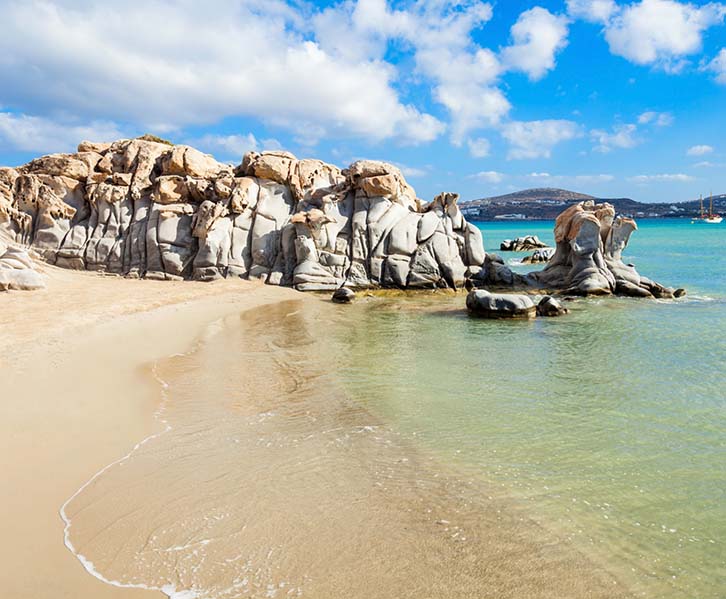
Venturing further inland from Paros’ bustling coastal towns, you’ll stumble upon the hidden gems of Prodromos and Lefkes. These tranquil villages offer a stark contrast to the tourist-heavy spots and boast captivating beauty. Prodromos boasts charming narrow lanes that wind their way through traditional Cycladic homes, their pristine white facades adorned with vibrant bougainvillea blooms in shades of bright pink. It’s in this quaint village that you’ll encounter one of Paros’ oldest Tavernas, Tsitsanis Taverna, a cherished family-run establishment renowned for serving exclusively homemade dishes crafted from locally sourced ingredients. Here, I savored a delightful array of Greek delicacies, from refreshing Greek salad to hearty stews, all paired with copious amounts of local wine to enhance the dining experience.
Lefkes, on the other hand, is a serene mountain haven characterized by peaceful alleyways, Cycladic architectural wonders, and neoclassical structures. The village’s picturesque ambiance is further accentuated by quirky boutiques and shops that outshine the bustling shopping streets of popular Parikia. These hidden treasures in the heart of Paros are enveloped by lush green hills, creating a mesmerizing backdrop for exploration. As you embark on hiking adventures through the island’s interior, you’ll meander past small vineyards and ancient, gnarled olive trees, further immersing yourself in the island’s enchanting charm.
Speaking of hiking adventures, Paros offers a wealth of scenic walking trails within the enchanting Environmental Park of Paros. This pristine natural haven is graced by the presence of one of the island’s most picturesque churches, overlooking a charming bay at the park’s entrance. This idyllic beach, with its tranquil and shallow waters, has become a beloved destination among local families seeking a serene seaside escape. Adding to its allure, the beach boasts an amphitheatre, outdoor cinema, and a delightful beach-side restaurant.
However, the true highlight of this hidden gem lies in its extensive network of walking routes, covering a total of 7.5 kilometers. Spanning across an expansive 800-hectare area, the Environmental Park of Paros holds protected status, as part of an ongoing conservation initiative aimed at revitalizing the lush vegetation across the Cyclades islands. Within this sanctuary, more than 6,000 species of indigenous plants and flowers have found their home, creating a rich tapestry of biodiversity. Local volunteers and schools play a pivotal role in maintaining this natural wonder, dedicating themselves to its preservation.
Each year, a new planting campaign is undertaken with the aim of stimulating regrowth and rejuvenation. This year’s efforts have been directed towards the cultivation of fig trees, which will soon join the thriving ecosystem alongside vibrant lupins, delicate lilies, and an array of local wild herbs, including oregano, chamomile, mint, and capers. The Environmental Park of Paros stands as a testament to the island’s commitment to preserving its natural beauty and nurturing its ecological heritage for generations to come.
Cuisine on Paros
The culinary landscape of Paros is a delightful reflection of its rich and diverse history, a harmonious blend of tradition and innovation, and a testament to the island’s vibrant yet relaxed spirit. Paros seamlessly marries the past with the present, and forward-thinking entrepreneurs are harnessing its strong heritage and exceptional produce to create a host of exciting new ventures.
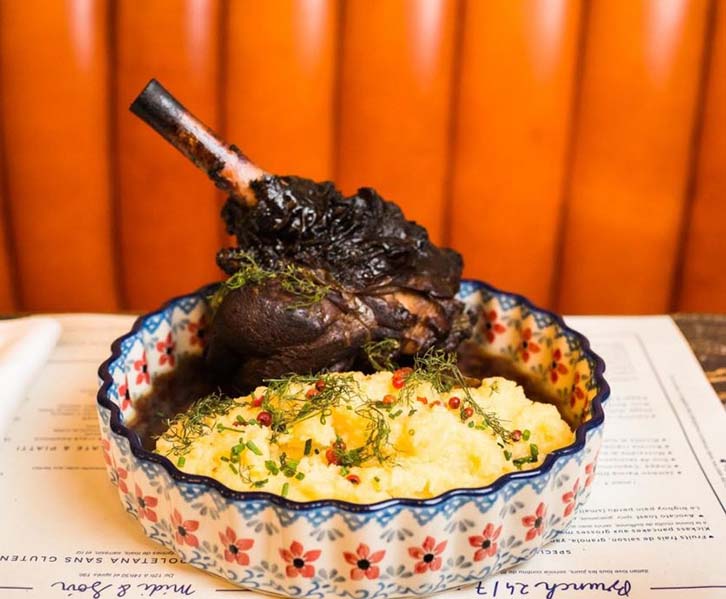
One such visionary is Arsenis, a dedicated farmer and skilled winemaker, who has embarked on a mission to promote sustainability and organic farming practices on the island. His brainchild, Arsenis Delicatessen, is a testament to his passion for showcasing the very best of Paros’ bountiful products. Located in the charming village of Isterni, this delightful grocery store has quickly become a must-visit destination for those seeking authentic and delectable food-based souvenirs.
Here, visitors can explore a treasure trove of local delicacies, each bearing the unique flavors and essence of Paros. From artisanal cheeses that have been meticulously crafted for generations to the finest wines that have matured under the island’s sun-kissed vineyards, Arsenis Delicatessen offers an array of gastronomic delights that capture the essence of Parian cuisine.
Whether you’re in search of a special gift to commemorate your journey or simply looking to savor the island’s culinary heritage, a visit to Arsenis Delicatessen promises an unforgettable experience. This establishment not only pays homage to Paros’ time-honored traditions but also embodies the island’s forward-thinking ethos, making it a remarkable addition to Paros’ culinary landscape.
One of my most cherished culinary findings was Moraitis Winery. Established in 1910 by Manolis Moraitis, this small winery is currently managed by the fourth generation of his family, brothers Savvas and Theodore. While there are three wineries on Paros, this is arguably the most renowned, with many of Moraitis wines earning numerous accolades. Wines from the Cyclades region are exceptional, featuring several grape varieties unique to this part of the world. Thus, a wine tasting at Moraitis proved to be an enlightening experience.
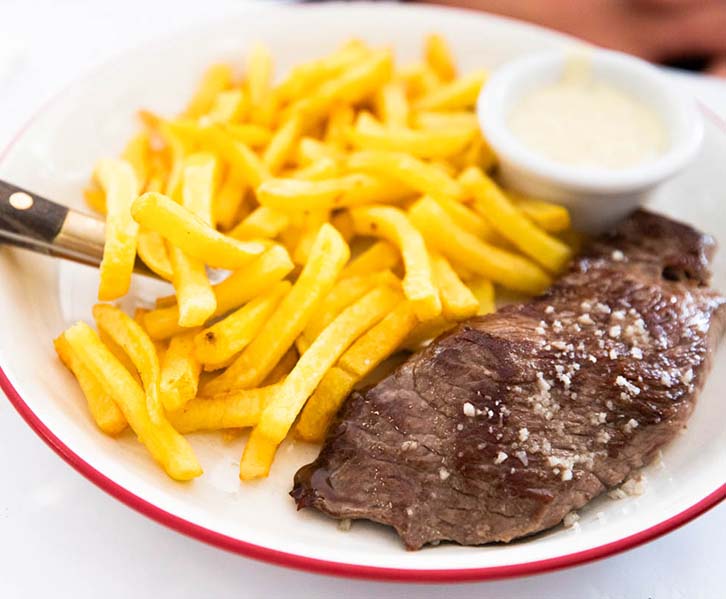
I’ve previously mentioned Tsitsanis Taverna in Lefkes, where I had an incredible (and almost never-ending) lunch. However, I also enjoyed fantastic meals at my hotel, the charming Kanales Rooms and Suites (you can read my review here), and at Ouzeri ton Naftikon. The latter, located on the marina’s edge in Naoussa, is a fantastic family-run restaurant that specializes in freshly caught seafood. This is where Paros fishermen gather to dine, and you’ll spot them perched on stools by the window, sipping Tsipouro and relishing the catch of the day. The bustling square, surrounded by restaurants, is brimming with locals enjoying late-night dining – it’s the perfect spot to dine like a local in Paros and savor the exquisite seafood of the Cyclades.
Where to Stay: During my trip, I stayed at Kanales Rooms and Suites in Naoussa, and I can wholeheartedly recommend it.
